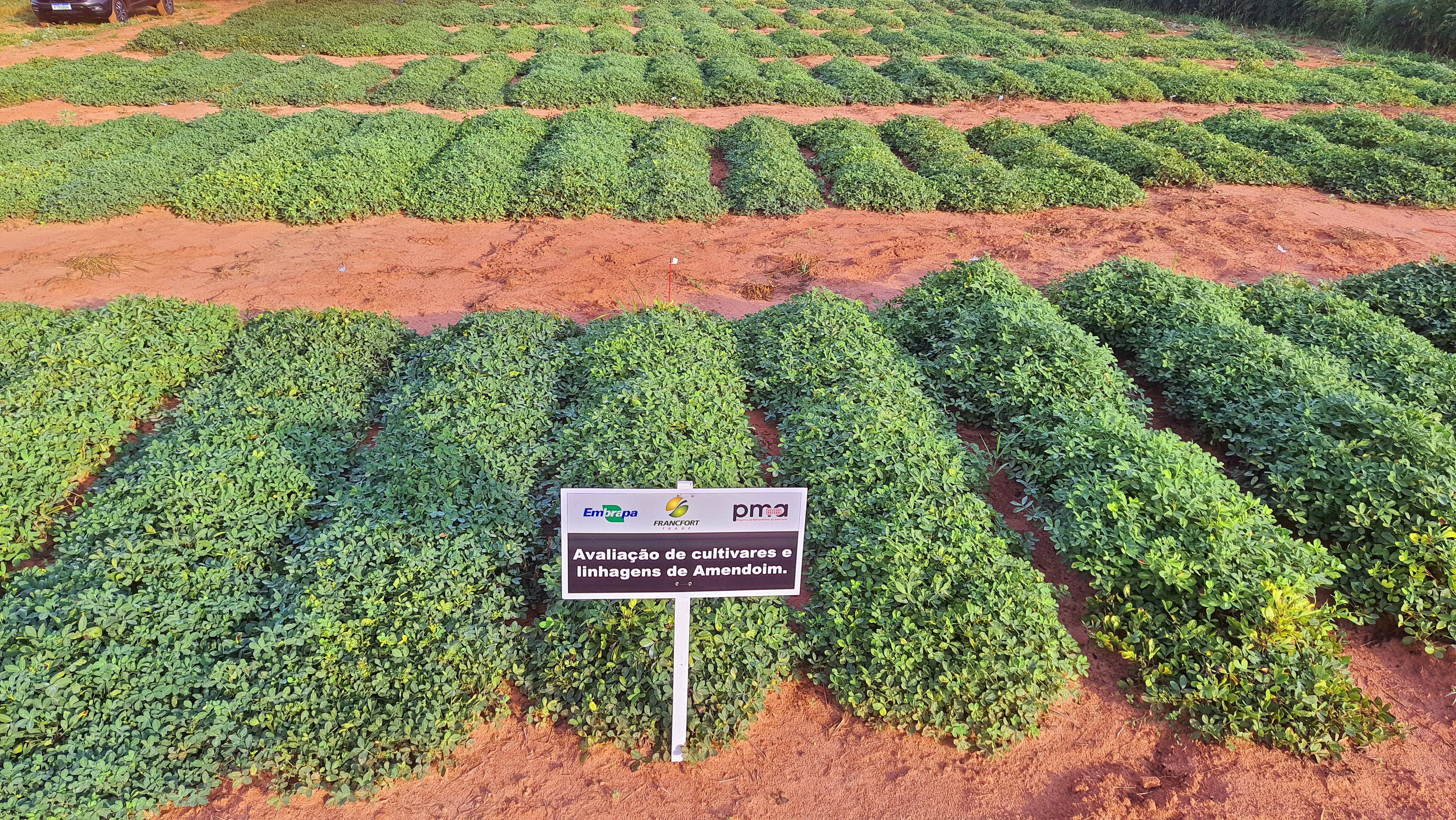Agronomic characteristics of peanut genotypes in the Alta Paulista region at the time of planting opening
DOI:
https://doi.org/10.52755/sas.v3i2.182Keywords:
Arachis hypogaea L., Spotted wilt, Seed size, ProductivityAbstract
Information on the performance of cultivars at specific planting times is important, especially for the main peanut producing state in Brazil: São Paulo. This work aimed to evaluate the agronomic performance of peanut genotypes, in the Alta Paulista region, municipality of Parapuã, in the state of São Paulo, sown at the beginning of the season. The experiment was carried out in the agricultural year 2021/22, in Parapuã – SP. The experimental design was in randomized blocks, with four replications. The treatments were eleven genotypes of low oleic lowland peanut, being two cultivars: BRS 423 OL, BRS 425 OL and nine lines: 1253 OL, 1991 OL, 2010 OL, 2055 OL, 2091 OL, 2110 OL, 2173 OL, 2914 OL and 3311 OL, developed by Embrapa's PMA. The plots consisted of two lines of three meters in length, with a spacing between lines of 0.90 m, an interval between plots of two meters and a total plot of 5.4 m2. The characteristics evaluated were ring spot severity, 100-grain weight and pod yield. Although sowing was carried out in October, adverse events were observed for this season, such as a severe epidemic of ringspot, long periods of drought and high temperatures during the period of plant development. The genotypes 2173 OL, 2010 OL, BRS 425 OL, BRS 423 OL, 1253 OL, 2055 OL and 2091 OL had pod yields higher than the average of the experiment, including BRS 425 OL, 2055 OL, BRS 423 OL, 2173 OL , 2010 OL and 2914 OL also had the lowest ring spot severity scores.
Downloads

Downloads
Published
How to Cite
Issue
Section
License
Copyright (c) 2022 Jair Heuert, Leonardo Francfort, Maxuel Fellipe Nunes Xavier, Taís de Moraes Falleiro Suassuna

This work is licensed under a Creative Commons Attribution-NonCommercial-ShareAlike 4.0 International License.
Autores concordam com os seguintes termos:
a) Os autores mantêm os direitos autorais e concedem à revista o direito de primeira publicação, com o trabalho simultaneamente licenciado sob a LicençaAttribution-NonCommercial-ShareAlike 4.0 International, que permite o compartilhamento do trabalho com reconhecimento da autoria e publicação inicial na Revista SAS. A licença permite o uso, a distribuição e a reprodução irrestrita, em qualquer meio, desde que devidamente citada a fonte. Essa licença permite também que outros remixem, adaptem e criem a partir do seu trabalho para fins não comerciais, desde que atribuam a você o devido crédito e que licenciem as novas criações sob termos idênticos.
b) Não cabe aos autores compensação financeira a qualquer título, por artigos ou resenhas publicados na South American Sciences.
c) Os conceitos expressos nos artigos publicados na South American Sciences são de inteira responsabilidade de seus autores.








